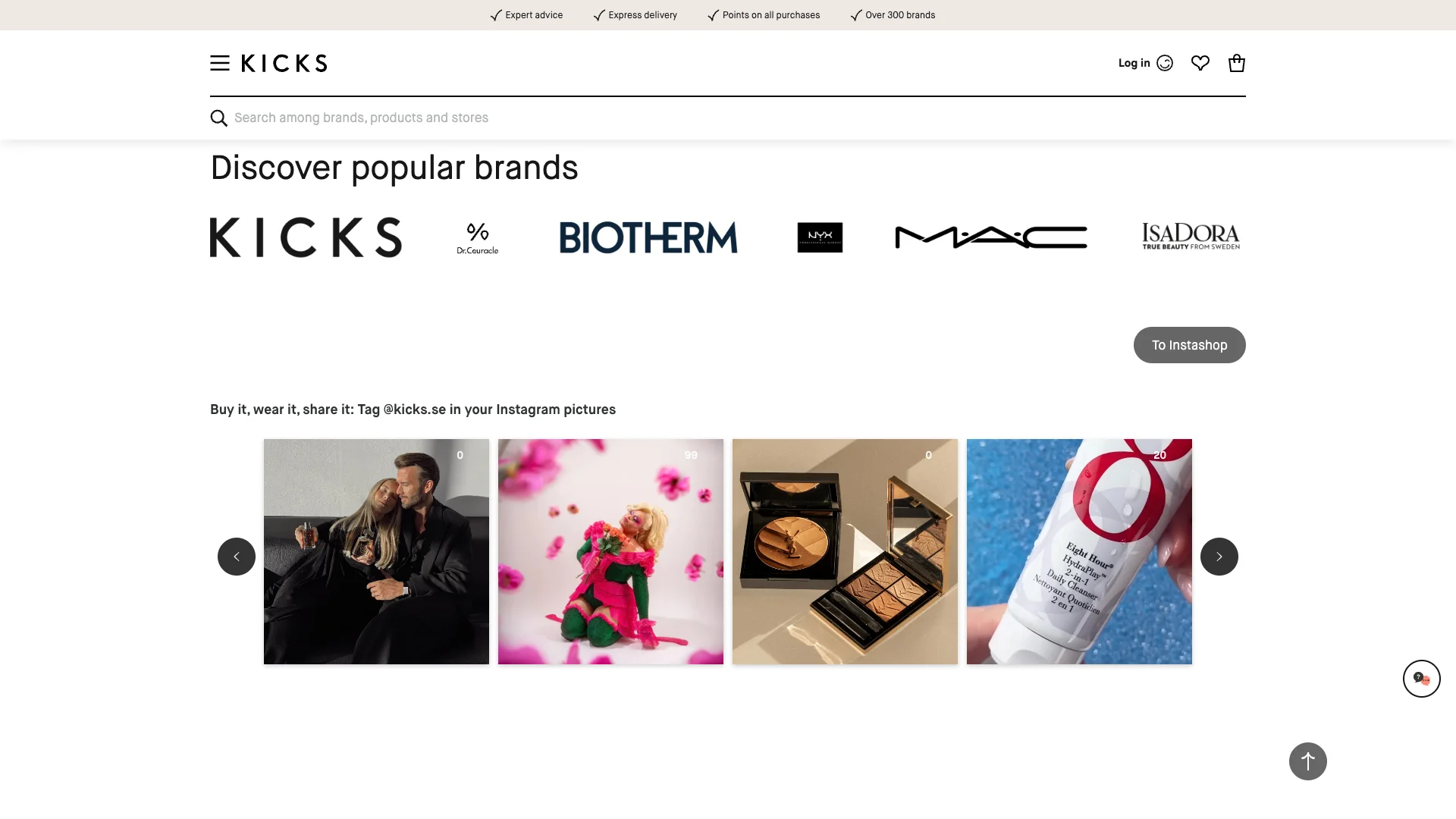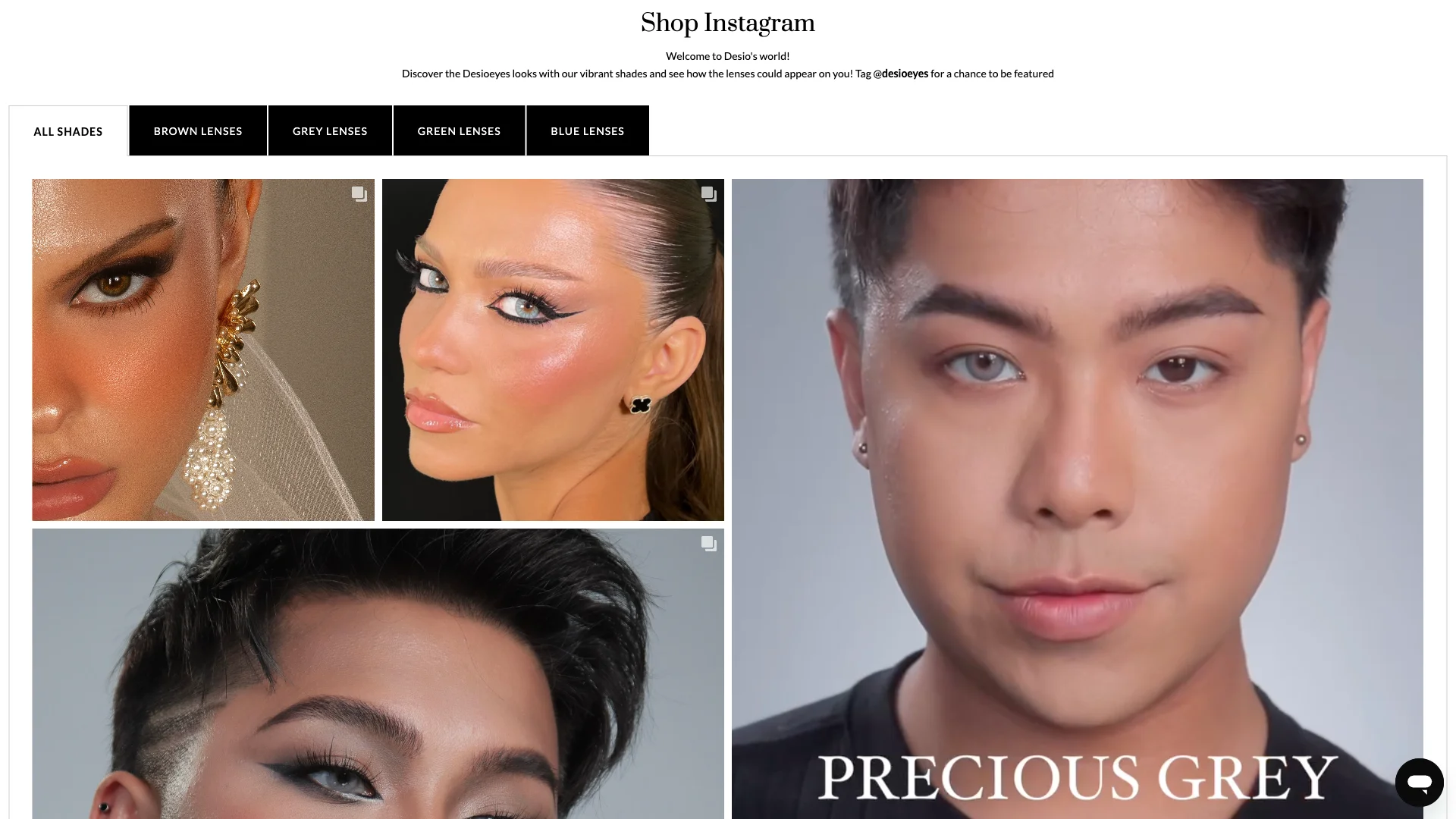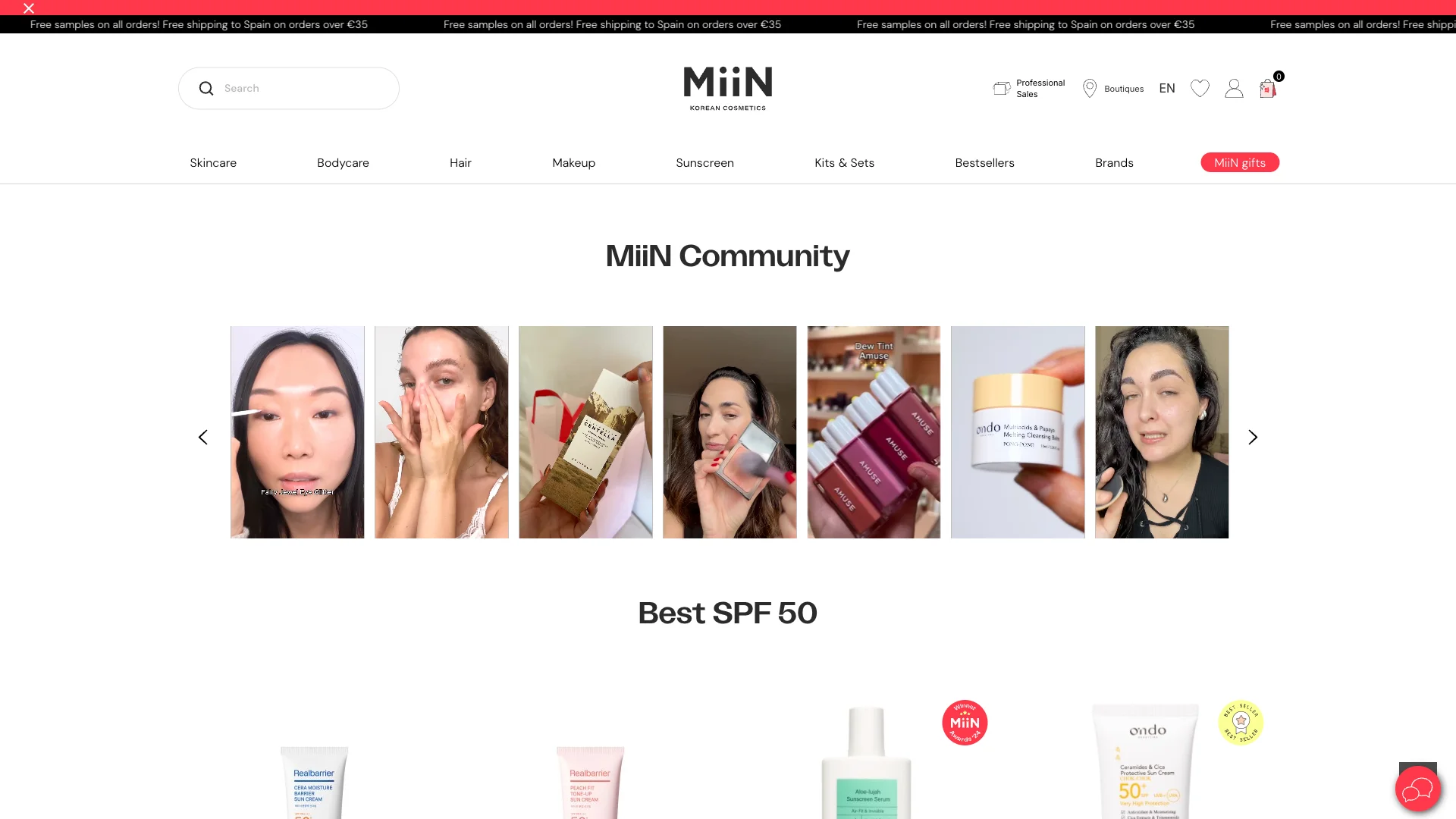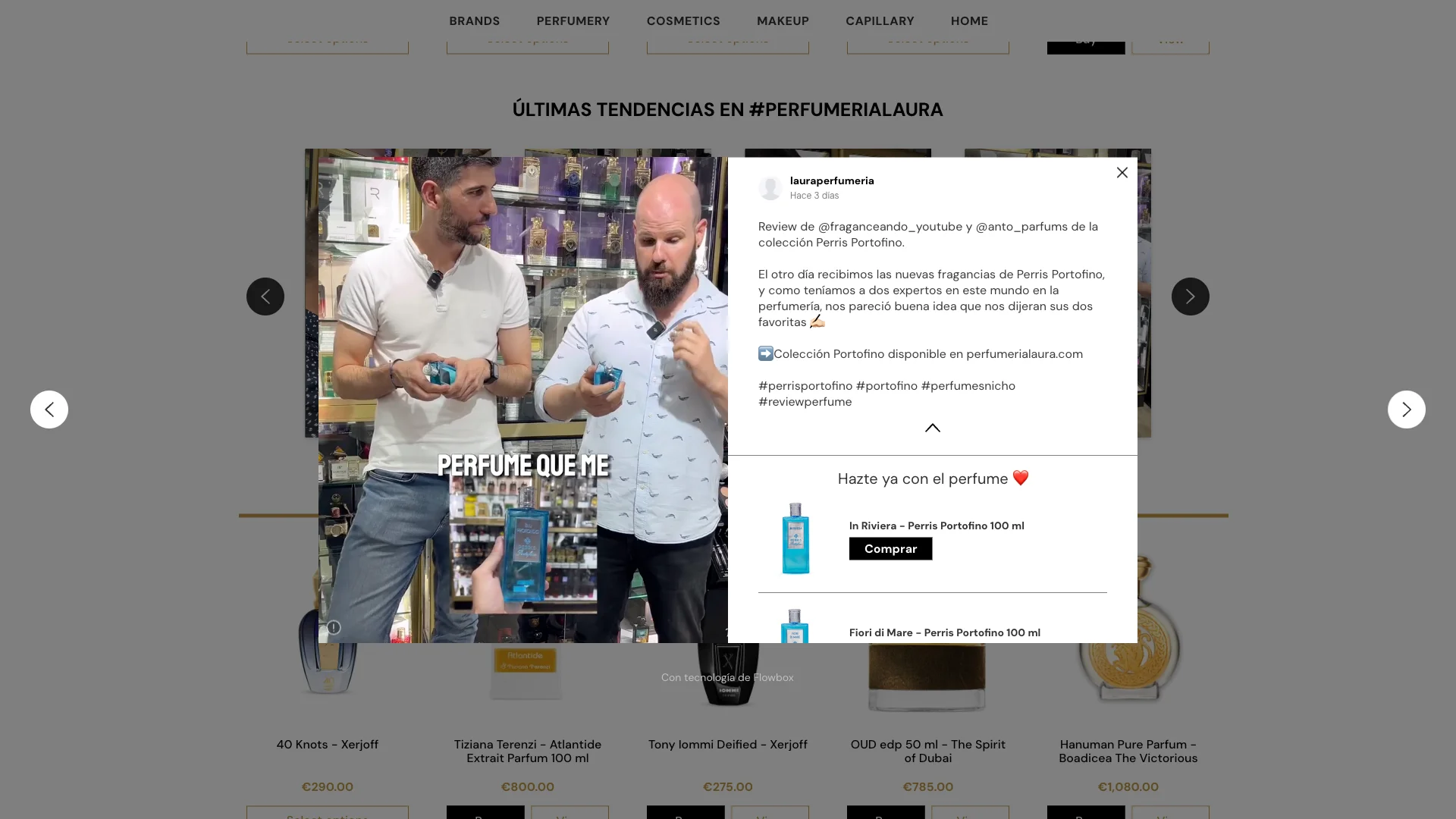Table of Contents
Beauty and Cosmetics brands are discovering the incredible potential of user-generated content (UGC) to create meaningful connections with their audience. From Instagram beauty influencers to TikTok makeup artists, customers are becoming powerful brand advocates through their personal beauty journeys and authentic content.
UGC represents a huge marketing opportunity, offering cosmetics brands a cost-effective way to showcase their products in real-life applications. As modern customers begin to seek inspiration from peers rather than traditional advertising, UGC becomes invaluable for building trust and driving engagement.
According to UGC statistics, the impact of user-generated content goes beyond social proof. It creates a dynamic, interactive relationship between beauty brands and their community, turning customers into active participants in the brand’s beauty narrative. From makeup tutorials to skincare routines, genuine user experiences help potential customers visualise products in real-world scenarios.
In this guide, we’ll explore how leading cosmetics brands have effectively leveraged UGC to enhance their digital presence, build authentic connections, and stand out in an increasingly competitive beauty market.
User-generated content has emerged as an invaluable asset for beauty and cosmetics brands, consistently proving its effectiveness in building trust and driving sales through authentic representation.
UGC allows beauty and cosmetics brands to motivate shoppers by showing how other people use their products, provide customers with authentic and natural inspiration, and give a better idea of how well their products work.
This genuine, customer-created content format provides unique opportunities to showcase products and connect with beauty enthusiasts:
By leveraging UGC, beauty and cosmetics brands can create a more inclusive, authentic, and engaging marketing strategy that resonates with modern consumers while addressing industry-specific challenges.
Let’s check some real Beauty and Cosmetics brands’ results with UGC.
Prior to their partnership with Flowbox, Pink Gellac was facing three significant challenges: they didn’t have that much user-generated content to leverage, it was difficult for them to get it because of all the manual and time-consuming tasks, and they needed a better showing of their products on the eCommerce site.
Flowbox has made it much easier for Pink Gellac to manage user-generated content across their channels. Before, gathering, organising, and sharing UGC was a slow, manual process spread across emails, DMs, folders, and tools.
“Before, it was all manual. Right now, everything is combined in one place (platform), and one person can handle it and make sure everything is organised, which makes it very easy for all other teams that want to use UGC.”
Jelmer Leek, eCommerce Manager at Pink Gellac
Now, everything happens in one place. The team can easily collect customer content, send rights requests, tag products, and publish UGC to their site or social media—all from a single platform. Learn how Pink Gellac benefits from UGC.
Kicks, the leading Nordic beauty retailer, recognises that their community members are valuable co-creators of authentic brand experiences. In eCommerce, where trust and authenticity are crucial, real customer voices have become instrumental in building confidence and inspiring potential buyers.
Through their digital channels, Kicks has cultivated an engaged community where customers share their product experiences and reviews, creating a trusted source of inspiration for others.
There is a unique challenge in selling skincare, beauty, and cosmetics products; they aren’t something that once opened is easy to return, and because of this, customer reviews have become essential in these industries. Learn how Kicks benefits from UGC.
“I think UGC is important to the customer who wants to try a new product in the cosmetics or skincare industries. Today the customer can read a lot of reviews and do a lot of research themselves. I think it’s easier to believe in and get inspired by what you see and hear about a new product when you see other people like yourself using the products.”
Tina Bergeskans, CRM Project Leader and Teamlead at Kicks
The brand leverages their online platform to foster connections, featuring detailed product reviews, application tips, and beauty advice. This approach enables customers to make informed decisions about high-value beauty purchases while engaging with fellow customers.

The impact of this strategy has been significant – Kicks has seen remarkable results, including a 41.57% increase in average order size and a 23.37% uplift in order value. These metrics demonstrate how user-generated content not only builds trust but also directly influences purchasing behaviour, making it a powerful tool for driving business growth.
Maquillalia, one of Spain’s leading online cosmetics retailer, understands that their community members are vital creators of authentic brand experiences. With online shoppers increasingly seeking authenticity, real customer experiences have become the most powerful tool for winning their trust.
Through their eCommerce platform, Maquillalia has built a thriving community where their users share product experiences and reviews. Learn how Maquillalia benefits from UGC.
“We’re good at listening and are very attentive to our customers. If they want to see a certain palette in action because they want to know how it will end up looking, the texture, etc. – we do it. And this is exactly how we’re using the Flowbox tool: to show how well our products work.”
Sara Varo – Marketing Manager at Maquillalia
The brand utilises Flowbox technology to showcase customer-generated content throughout their website, featuring genuine product reviews and application demonstrations. This approach helps overcome the challenge of customers not being able to try products before purchase, while building trust through authentic user experiences.

The results have been impressive – Maquillalia has seen an 11.20% increase in conversion rate and a 15.68% increase in average order value. These results showcase the power of authentic customer voices in driving real business success.
As a pioneer in coloured corrective lenses, Desio faced a unique challenge: demonstrating how their products blend aesthetic innovation with medical reliability. Unlike typical beauty items, contact lenses require trust in both safety and style.

With customers unable to “try before they buy,” Desio turned to user-generated content to showcase real-world versatility across diverse eye colours, skin tones, and use cases, critical for a product that transforms appearance. Learn how Desio benefits from UGC.
“Flowbox allowed us to collect and showcase the best user-generated content. Videos are more real and authentic. This is another innovation from Flowbox.”
Amira, Marketing Director at Qualimed Srl
Recognising that at times static images have their limitations in a niche like theirs, Desio use a lot of videos in their flows to show customers the true nature of their products.
This approach not only boosted transparency but also drove an 83.44% rate in post engagement per engagement and also a 13.3% click-through rate on their UGC images.
MiiN Cosmetics centers its brand on authenticity in an industry often criticised for unrealistic standards. By curating user-generated content from customers sharing their unfiltered experiences with MiiN products, the brand shifts focus from polished perfection to genuine results.
Followers post makeup tutorials, skincare routines, and other inspirational videos that help to inspire other customers to use the MiiN products.

MiiN’s UGC strategy showcases everyday users, not models, applying products in their own homes, under natural lighting, and with unique skin textures. This content helps potential buyers visualise how the products work in their reality.
This transparency builds trust, as shoppers see MiiN’s commitment to celebrating real beauty, not selling unattainable ideals.
Perfumería Laura bridges the gap between sensory experience and online shopping by featuring user-generated videos of customers and fragrance influencers testing perfumes in-store. They also make this journey shoppable.
These clips capture genuine reactions and can be extremely helpful to prospective buyers when an influencer dissects how a fragrance evolves on skin. This translates the intangible nature of fragrance into a helpful guide.

Unlike static product descriptions, these videos let shoppers “experience” scent through others’ eyes and words. These moments demystify fragrances, helping customers navigate scent profiles with confidence.
By showcasing real people navigating the same uncertainties and delights of perfume selection, Perfumería Laura turns browsing into a shared journey of discovery.
The Flowbox UGC Platform has many great tools and capabilities that can help any Beauty and Cosmetics brand, no matter how big or small. Here is an overview of the key platform features that can help you automate UGC tasks:
Flowbox’s Collection Tool continuously monitors social channels (Instagram, Facebook, TikTok, YouTube, Pinterest, and more) for brand mentions, tags, and designated hashtags.
Also, the Media Uploader feature enables your customers to upload UGC directly through your website or via a shareable link – no social media needed.
All captured posts flow into a single dashboard, ensuring your team never misses valuable user‑generated content.
The Moderation tool is a suite of AI‑powered moderation capabilities that lets you curate high‑quality, on‑brand UGC at scale:
Create, schedule, and distribute both user‑generated and branded content across multiple social platforms—all from within Flowbox. This unified interface eliminates manual posting, streamlines your social calendar, and preserves the authentic voice of your community.
Collect valuable customer feedback with highly customisable rating and review forms, moderate high volumes of ratings and reviews from within our platform or opt for auto moderation fields that optimise your workflow, then automatically display them directly on your product pages with different configurations to choose from.
With built‑in Google Analytics 4 integration, Flowbox lets you track every UGC interaction—clicks, conversions, engagement paths—alongside your broader marketing metrics. Use these insights to refine gallery placements, content mix, and UGC campaign tactics in a single, data‑driven dashboard.
For beauty and cosmetics brands, implementing a UGC strategy has become essential for building authentic connections with beauty customers. Success stories from KICKS and Maquillalia demonstrate that leveraging customer content can significantly impact both brand trust and purchasing confidence.
A well-executed UGC strategy in beauty serves multiple purposes: it showcases real results on diverse skin types and tones, demonstrates application techniques, validates product claims through genuine reviews, and builds an engaged beauty community.
By incorporating customer before-and-after photos, tutorial videos, and detailed reviews into their marketing mix, beauty brands can create a more transparent and relatable shopping experience.
The key to success isn’t just collecting beauty content, but strategically integrating it throughout the customer journey. Customer content should be woven into the brand’s identity, creating an authentic showcase of beauty transformations that inspires and empowers both existing and potential customers.
Book a demo with Flowbox and we’ll show you how a UGC platform can boost your brand sales.